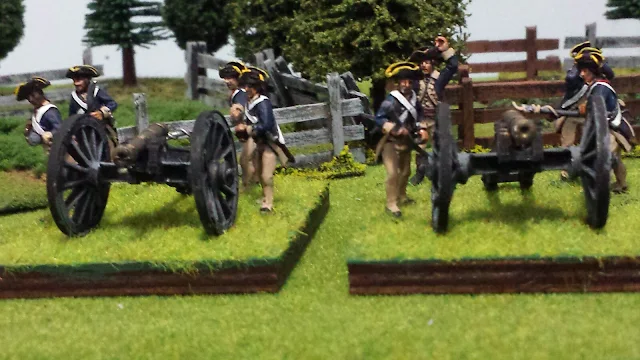Nathaniel Towson was appointed a Captain in the U.S. artillery on March 15, 1812. Prior to the war he had served in militia artillery units in Louisiana and Maryland. His first action during the war involved his capture of the brig HMS Caledonia He quickly gained a reputation for his effective command of artillery. During the war Towson commanded artillery at the battles of Queenstown Heights, Fort George, Stoney Creek, Chippewa, Lundy's Lane and the Siege of Fort Erie. His batteries fire during the Siege of Fort Erie was so constant it became known as " Towson's Lighthouse." His handling of the American artillery at Chippewa heavily contributed the the American victory.
American field artillery during the War of 1812 was organized into "divisions" which is similar to the modern term of "battery” which I will use here. American batteries consisted of six guns; either four guns of the same calibre and two howitzers or six guns of not more than two calibres. It should be remembered that the theoretical and actual organization of American field artillery were two very different things. These could and did change from campaign to campaign and battle to battle.
Gun crews consisted of two types of soldiers: trained gunners and less-qualified men called matrosses. The gunners aimed, loaded and fired the guns while the matrosses assisted by bringing up ammunition or helping to move the gun (i.e. knuckle daggers). Gun detachment commanders were usually N.C.O.'s who supervised the work of the detachment, personally laid the gun, observed the fall of shot and made the necessary corrections. Artillery officers commanded batteries of six to eight pieces or sub-units of two or three weapons. The gun crew for a U.S. 6-pdr. field gun comprised the gun commander, two trained gunners and six matrosses. Howitzers had a similar complement but with four more matrosses. When additional muscle power was required, it was the practice to take unskilled men from the nearest infantry unit. Visually there was a difference in British and American cannon. While British and most European guns tended to be cast from brass, American guns tended to be cast from iron. Iron while heavier then brass lasted much longer and stood up to campaigning better (Birkheimer, William E., Historical Sketch of the Organization, Administration, Materiel and Tactics of the U.S. Artillery. New York, 1884, pages 260 - 261 for this). Wooden gun carriages were painted a medium blue. Iron fittings were painted black to prevent rust.



















